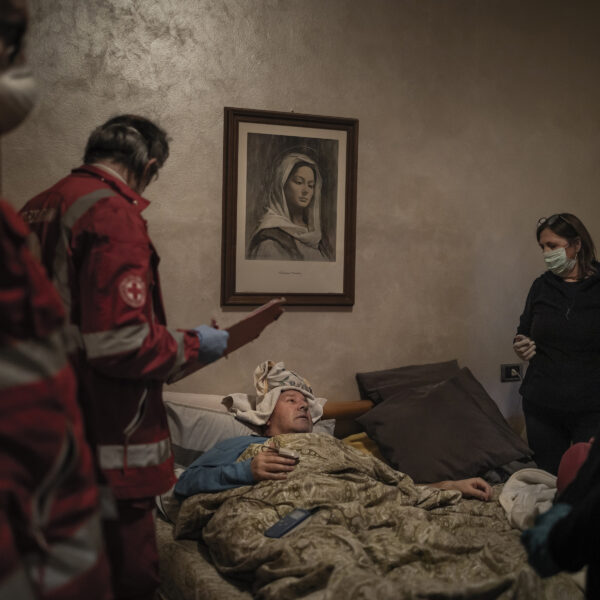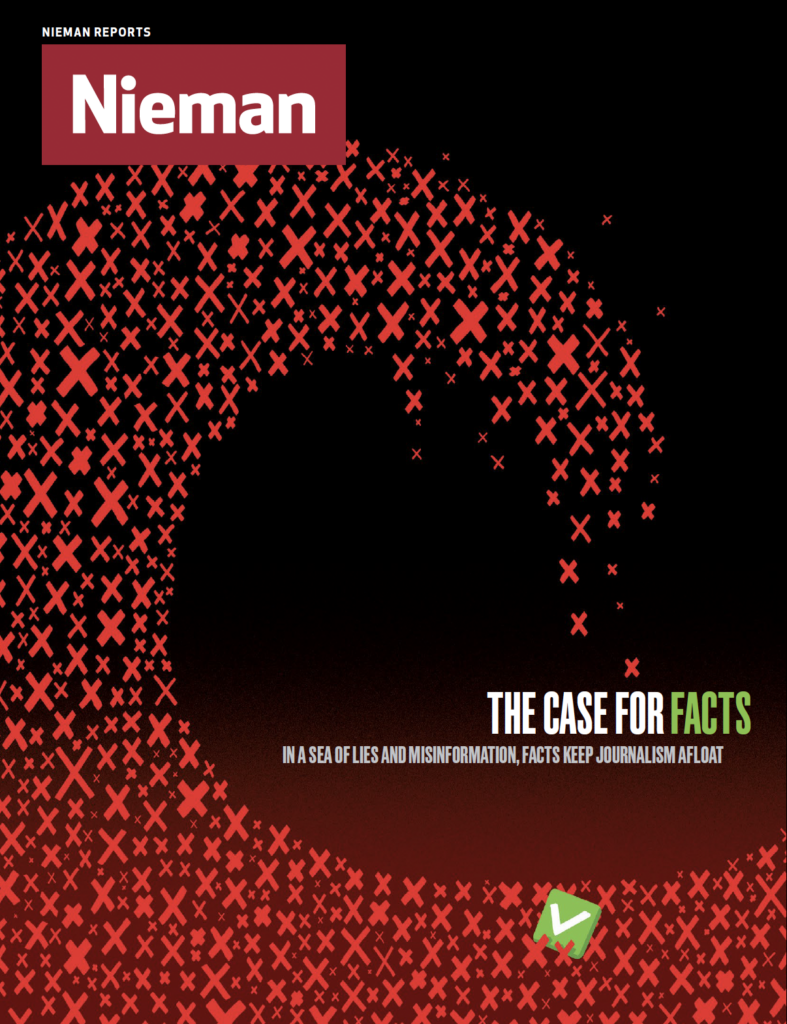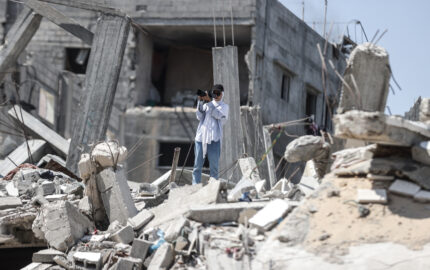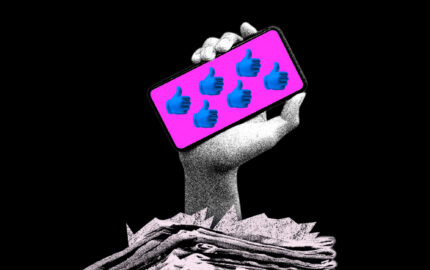Whenever Alessandra Loche walks her dog, Samantha, down Via Marconi in the northern Italian city of Bergamo, flashbacks of army men loudly loading coffins on their trucks send shivers down her spine.
“It takes me a few seconds to get back to the present, even after all this time,” she said with a slumbering tone of voice and sadness in her eyes. “My body stops shaking once I calm down with breathing exercises I learned during therapy.”
Today Loche is a freelance reporter covering the court beat for a variety of Italian outlets, but five years ago she was a staff reporter at L’Eco di Bergamo, the city’s main daily, which in February 2020 found itself in the middle of a tragedy.
Italy, and particularly the regions of Lombardy and Veneto in the north, became ground zero of the COVID pandemic in the West. On Jan. 31, 2020, the country declared a state of emergency, which gave the rest of the world a peek into what life under lockdown looked like. In just nine months, authorities confirmed 36,000 deaths in Italy due to the novel virus, with the actual number estimated to be almost double.
Although two years later the Italian government terminated the COVID-19 state of emergency and the country gradually returned to normal life, the scars for those who witnessed this storm first-hand — particularly healthcare and media workers — are deep.
“We weren’t ready to cover something like this, it seemed so far away as it was happening in China and it was just a little more than a flu. Even as journalists we underestimated it,” said Loche, who at the time lived next to the church where dozens of coffins were loaded on Italian army trucks at night, an image that became a symbol of the pandemic’s human cost. “Reporters like me who would only cover city news didn’t expect to be confronted with parachute crisis reporting all of a sudden. I still have nightmares from time to time about what I’ve been through.”
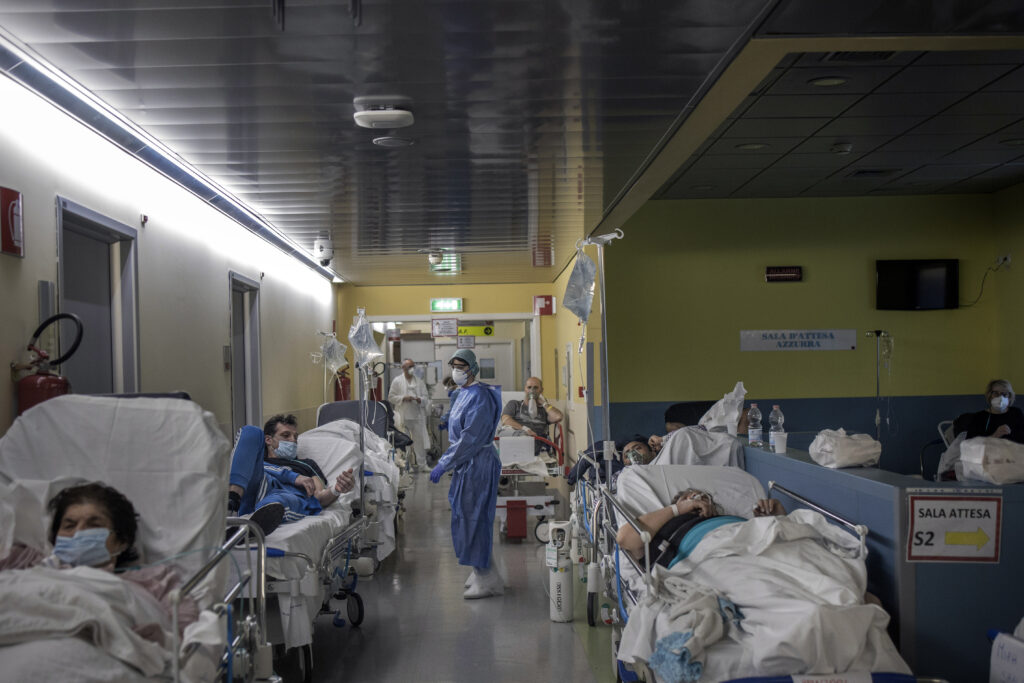
Five years have passed since the beginning of the global pandemic, but Italian journalists still struggle to cope with their trauma, PTSD symptoms, and memories that keep haunting them. As some of the first Western reporters on the frontline of a new story no one knew how to cover, many are dismayed to see how fast the world has moved on from a tragic news event that has impacted their mental health forever.
“We weren’t ready to cover something like this, it seemed so far away as it was happening in China. ... Even as journalists we underestimated it."
Alessandra Loche, freelance journalist
The Press Emblem Campaign — a Geneva-based nonprofit dedicated to strengthening legal and safety protections for journalists — estimates that around 2,000 media workers had died of COVID-19 by 2022, but the actual figure is “certainly higher,” according to the Campaign. Italy registered at least 60 journalist deaths caused by COVID, while thousands more have sought therapy.
According to Bruce Shapiro, director of The Dart Center for Journalism and Trauma at Columbia University’s Graduate School of Journalism, it is clear that Italian journalists witnessed very high levels of suffering, during the most frightening and uncertain period of the pandemic. “While Italian journalists responded to the pandemic with extraordinary commitment and resilience, the horrors of the first pandemic wave could leave them vulnerable to high levels of PTSD as well as other consequential, sometimes disabling issues such as burnout, moral injury, and depression,” Shapiro said.
Anthony Feinstein, professor of psychiatry at the University of Toronto and author of a study on COVID’s mental effects on journalists, said the most common psychological difficulty experienced by journalists covering the pandemic was anxiety. “Certainly, some journalists showed symptoms of depression and PTSD as well, but anxiety appeared to be the main psychological consequence,” Feinstein explained.
When Loche drives her car around Bergamo and hears the sound of ambulances approaching in the distance, her heart races and cold sweat wets her forehead. Other times it’s the phone ringing that triggers her. In March 2020, that sound meant either bad news was coming, or readers were desperately calling the newsroom begging her to write their stories. “All these have led to higher anxiety levels, which after two years I decided to treat through therapy,” Loche said.
In his research, Feinstein found that the symptoms shown by journalists were similar to those displayed by healthcare workers. “Unconscious emotions can surface during times of stress or in response to events that trigger recollections of ill-health or time in hospital,” he said. Given that Italy was at the forefront of early efforts to manage this crisis, Feinstein added, “It is likely that Italian journalists and indeed, Italian citizens, retain deeply painful emotions of that difficult time.”
For some reporters like Isaia Invernizzi, the emotional toll of covering his own community compounded the challenge of covering the overall tragedy. Born and raised in Bergamo, the city that became a symbol of the pandemic, Invernizzi’s data reporting on COVID deaths won him several awards. But it came at a high personal cost, as he had to cover the tragedy while all around him, relatives and colleagues were succumbing to the virus.
“I still remember my first silly assignment at the time,” Invernizzi said, recounting how he had been sent to Bergamo’s airport — the third largest in Italy — to ask travelers what they thought about “this new virus coming from China.” “Little did I know my city was about to become COVID’s ground zero,” he added.
The months that followed became a spiral of trauma for Invernizzi. He saw many of his colleagues end up in the intensive care unit, and one of the newsroom’s photographers died. The constant mourning and dealing with death and illness on a daily basis, both at work and at home, impacted his sleeping habits.
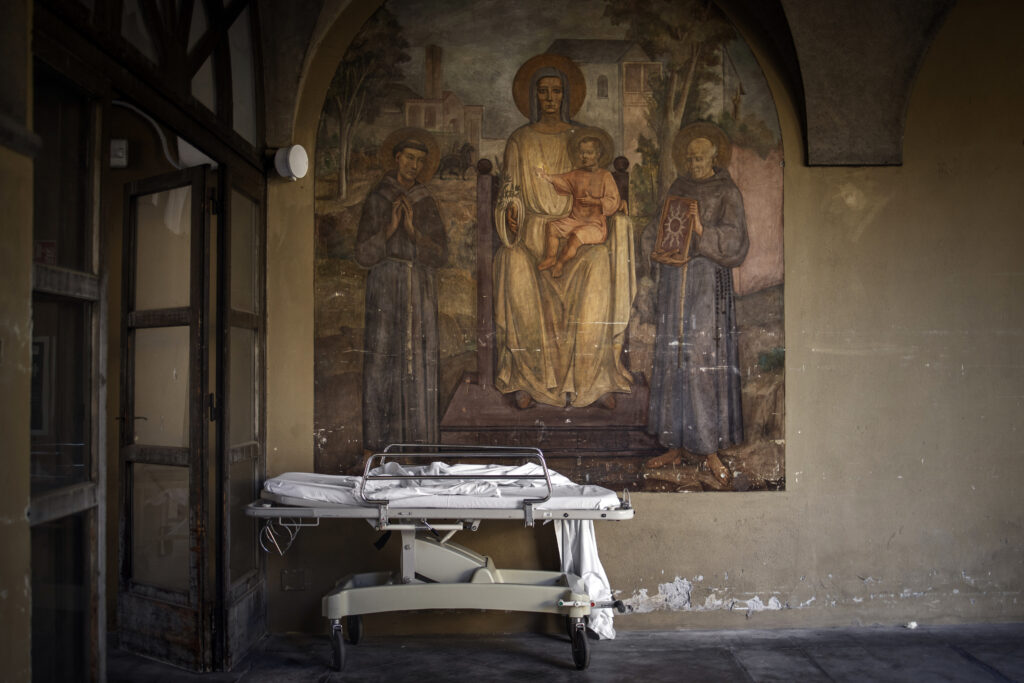
“I felt the gravity of my mission, collecting the stories of those who were sick before they actually died … it was a heavy task for my mental health,” he said. “Being one of the few people [as a journalist] going around despite the lockdown, spending time in hospitals like a healthcare worker, and dealing with relatives who would constantly cry on your shoulders … is something I will never forget.”
What saved him was to maintain a data-driven approach, so he could attempt to detach from the more emotional side of reporting. In one instance, he was able to provide clarification for a family whose father had died of COVID but hadn’t been registered as a victim of the virus.
Others, however, decided that the emotional side was what was missing from coverage. Photojournalist Fabio Bucciarelli had completely different plans before the pandemic broke out. As a war reporter specializing in conflict and humanitarian crises, he was bound for South Sudan when the lockdown stopped all international flights. He never thought he’d cover a giant tragedy in his own country.
“When I report on wars, there’s a clear visual element that stands out, you can give a face to an enemy, or the victims,” Bucciarelli said. “But when COVID began, all we could visually see was just photos of clean water in Venice, clinical objects like masks and gloves and empty squares, but no photos of the families' struggles, the true face of COVID.”
So he set out on a mission to give a face to a faceless enemy, embedding with the local Red Cross and following ambulances around Bergamo day and night. From crying relatives suffering from the impossibility of honoring their loved ones, to funerals, to depicting people stuck in bed in complete solitude, his photos came to symbolize Italy’s pandemic.
While on a one-year assignment with The New York Times, he became close to many of his sources and shared in their moments of sorrow. “Working in your own country makes a huge difference, there’s no intermediary when you speak to people, no translator, no humanitarian workers,” Bucciarelli said. “So even though it’s not the same emotional transport as covering wars for decades, it still moves you, because it’s your community.”
Bucciarelli said he did not like the way people constantly likened pandemic coverage to ‘war frontline reporting.’ “It made me feel like we were devaluing the work of those who’ve covered conflicts for years,” he said. “Thankfully we quickly dropped that term — it made me feel sick.”
Much like covering war, however, the first months of COVID-19 required journalists to contend with death on a vast scale, with ongoing danger to themselves, and with an unpredictable outcome, according to Columbia University’s Shapiro. But coverage of the pandemic also presented its own unique challenges. “Unlike war — in which the risks, however horrible, are visible and known — COVID was both pervasive and mysterious, the nature of its threat was wildly uncertain for many months,” Shapiro said. “And then add to that the enormously stressful job of reinventing newsrooms for entirely remote work flows. All of these factors together meant an unprecedented combination of stress and trauma.”
Many of the journalists covering the worst impact of the pandemic were local reporters with no experience reporting on war, disasters or large-scale trauma, and they worked in smaller local newsrooms without safety training or the resources to prepare for the crisis, Shapiro added. Reporters' own health and their communities and families were at constant risk and part of the story.
“I know many colleagues who’ve covered big-scale conflicts hated this term, but for someone who had mostly covered local healthcare news until then, it sort of felt like parachuting into a conflict area,” said Valentina Calzavara, a journalist from the local newspaper Tribuna di Treviso who occasionally writes for other papers in the region.
She says that even now, she sometimes wakes up from nightmares that remind her of the face of an elderly woman she interviewed in a nursing home in Vò — a small town near Venice where the first COVID death in Italy was registered.
Five years since the beginning of the pandemic, her trauma still manifests itself in small, daily gestures — like constantly sanitizing her hands even when she hasn’t touched anything, or writing in a journal as a therapeutic tool.
“Unlike war — in which the risks, however horrible, are visible and known — COVID was both pervasive and mysterious, the nature of its threat was wildly uncertain for many months.”
Bruce Shapiro, director of The Dart Center for Journalism and Trauma at Columbia University’s Graduate School of Journalism
Writing has helped her give humanity back to a news event that was mostly reported with numbers. “Giving back a profile to families helped them give value back to their lost loved ones, but also helped me elaborate what I’ve been through,” she said. Calzavara co-authored a book in 2020 about COVID and dedicated two chapters specifically to what happened to journalists, a subject she felt needed a platform.
“I was surprised by how people collectively removed this period from their lives,” she said. “Personally, I can’t forget anything … Perhaps because I was among the few who was able to move around, therefore I have vivid memories of actions, while those who physically stood still at home have lived it like a dream,” she added. Calzavara believes it could take 15 or 20 years for people to be ready to talk about these experiences with detachment, but for now, “I know that all the pain remains, you just learn how to live with it.”
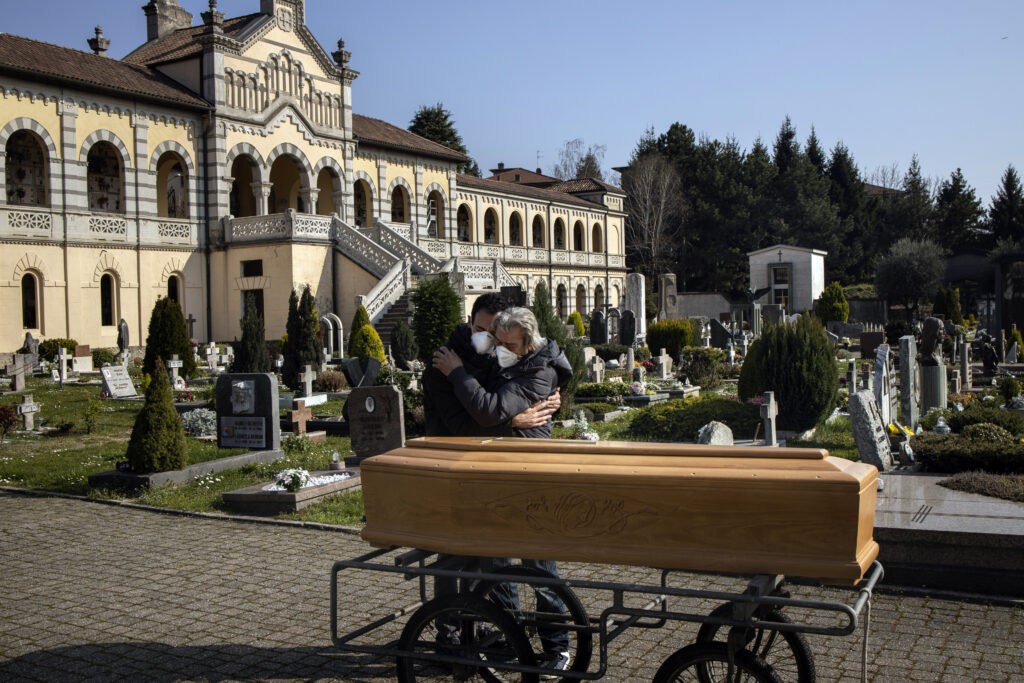
According to Feinstein, the psychiatry professor, for those whose lives were touched in a traumatic way — such as the loss of relatives or close friends, or witnessing people die — the memory will remain very alive. “People often suppress traumatic memories. Necessity dictates that as life goes on, one cannot dwell on what has passed, but that does not mean that the trauma of the moment has been forgotten,” he said.
While reporting for her book and interviewing therapists and psychologists, Calzavara realized she needed help. She began seeing a therapist herself, and learned how to cope with her own pain. “I realized that listening to other people’s desperation for hours, for months, took a toll on me. At first there was the adrenaline rush of covering something new in my field, but the more it lasted, the worse it got.”
Looking back at her own coverage, she says it’s understandable to want to forget but that it is not fair to do so, and that it is important to reflect on what journalists did right and what they have learned. “What I wish is that we find new ways to tell this tragedy and the period we all collectively, globally lived, that is always with us and taught us how to face a collective trauma,” Calzavara said. “We can use it to prepare for the next pandemic or the next crisis.”
